1. Using Your Eyes to Find Fish
Between The Lines - Ch: 11 Finding Fish
Finding fish to catch them may sound rather obvious. The art of finding them is rather more complex. Every conceivable electronic and information system from monthly magazines, weekly papers, radio reports, sounders, radars, radio chatter are all the normal method of gathering intelligence on where to best target your efforts. Realistically, the most important instrument is permanently with you on every trip, your eyes, and those of your crew.
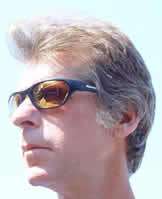
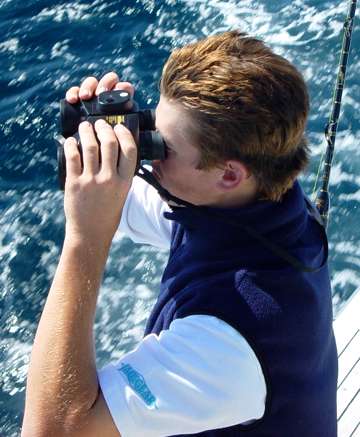 There are add-ons to these valuable instruments that dramatically increase their effectiveness, the first of which is sunglasses. They should be polarised, in a colour that is comfortable to wear all day. The colour largely depends on conditions. In bright sun grey lenses would be best, on a dull cloudy day with low light, contrast enhancement may be needed using amber or yellow lenses. Photocromatic lenses, which lighten and darken according to light levels, are useful as many of the best signs of fish are in low light conditions around dawn and dusk. Lens colour is a personal choice. Make sure that you can wear them all day without getting a headache or eye strain. Comfort and effectiveness can certainly be increased by getting a comfortable frame and wearing a hat to minimise light coming in from the top and sides of the glasses. The frame should also allow as much peripheral vision, which is the vision from the sides, as possible.
There are add-ons to these valuable instruments that dramatically increase their effectiveness, the first of which is sunglasses. They should be polarised, in a colour that is comfortable to wear all day. The colour largely depends on conditions. In bright sun grey lenses would be best, on a dull cloudy day with low light, contrast enhancement may be needed using amber or yellow lenses. Photocromatic lenses, which lighten and darken according to light levels, are useful as many of the best signs of fish are in low light conditions around dawn and dusk. Lens colour is a personal choice. Make sure that you can wear them all day without getting a headache or eye strain. Comfort and effectiveness can certainly be increased by getting a comfortable frame and wearing a hat to minimise light coming in from the top and sides of the glasses. The frame should also allow as much peripheral vision, which is the vision from the sides, as possible.
Apart from sheer comfort and eye protection, sunglasses are used to not just look at the surface and above to find the signs, they are most importantly used for looking through the water for bait and actual fish. They will only achieve this if you learn to focus below the surface. This is best done from as high above the water as possible, say in the boat's bridge or tuna tower. The ability to ‘see the signs' is one of the arts of successful game fishing.
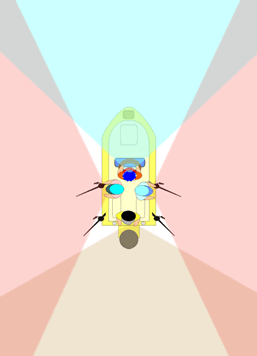 Fig 1Another useful add-on for your eyes is binoculars. As they will be used at sea on a boat which is usually moving, a lower magnification is preferable with 7x50mm being around the maximum. There are several models specifically made for offshore use. They are waterproof, rugged and often have an inbuilt compass and or rangefinder that will give a distance and heading to the specific sign. Scanning the water surface and skies are be In a good game fishingteam all members are trained in ‘spotting', often dividing up the 360 degrees of the ocean into areas that each is responsible for. (Fig 1) The importance of using your eyes in the whole scheme of things cannot be overrated. Without question, it is the ability of the crew to ‘spot' that is the difference between success and failure. Often when trolling lures, crews are fixed to watching the hypnotic rhythm of the lures smoking behind the boat, waiting for that adrenaline shot of a dorsal or bill in the pattern. In reality, if you want that to happen more often, you should be looking forward to your next hook up, not behind the boat at the lures. The howl of the Shimano Tiagras will leave no doubt that your efforts have paid off!st done from the most stable position in the boat which is generally the rear of the cockpit.
Fig 1Another useful add-on for your eyes is binoculars. As they will be used at sea on a boat which is usually moving, a lower magnification is preferable with 7x50mm being around the maximum. There are several models specifically made for offshore use. They are waterproof, rugged and often have an inbuilt compass and or rangefinder that will give a distance and heading to the specific sign. Scanning the water surface and skies are be In a good game fishingteam all members are trained in ‘spotting', often dividing up the 360 degrees of the ocean into areas that each is responsible for. (Fig 1) The importance of using your eyes in the whole scheme of things cannot be overrated. Without question, it is the ability of the crew to ‘spot' that is the difference between success and failure. Often when trolling lures, crews are fixed to watching the hypnotic rhythm of the lures smoking behind the boat, waiting for that adrenaline shot of a dorsal or bill in the pattern. In reality, if you want that to happen more often, you should be looking forward to your next hook up, not behind the boat at the lures. The howl of the Shimano Tiagras will leave no doubt that your efforts have paid off!st done from the most stable position in the boat which is generally the rear of the cockpit.
To many people starting out, the ocean seems a desolate place, much like a desert, even though you are aware of current, eddies, temperatures and bottom structure, it may take a while to realise how obvious the signs are, and how easy it is to interpret them, in part using much of the information from the early chapter ‘Systems'. In fact, once you get accustomed to looking for things, the ocean signs will be as clear as neon billboards.
You can certainly compare ‘spotting' to tracking. Once you know what to look for and how to interpret what you are seeing, much like a tracker, you'll be able to navigate the signs.
Some of the signs are quite blatant such as guano covered rocks. (Fig 2) Sea birds perch on rocks, resting and waiting for the action to happen. Often the chosen rocks are on reefs or islands. The side of the rock most covered in guano is either the direction in which the birds can see activity or smell it on the wind.
Also note that the rocks are surrounded by water that is of both different texture and colour which are current lines, the highways of the sea.
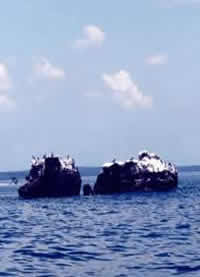 |
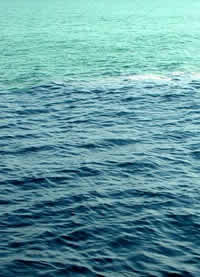 |
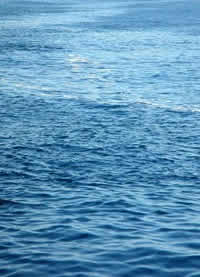 |
| Fig 2 | Fig 3 | Fig 4 |
There is an infinite variety of current lines, some are evident by a distinct colour change. (Fig 3) Others by calm or rough lanes, possibly with debris such as weed, flotsam or foam caused by wind and friction between the bodies of water moving at different speeds and often in different directions. (Fig 4)
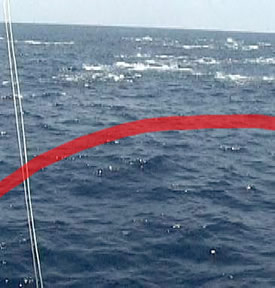 |
|
| Vid 1 | Fig 5 |
To highlight the importance of these highways we'll look at a working school of yellowfin which is obviously quite easy to spot. (Vid 01) Although when you can examine the scene in detail you can see that one of the reasons fish are there is the current. (Fig 5) This edge of the current is not easily seen at first to the inexperienced eye, but when pointed out it is clearly evident. The way to view it is to analyse what you are looking at by processing the image in your mind to highlight the texture of the water surface.
Much like the highways, we are more accustomed to, the highways of the ocean are not always busy. To expect significant activity we need to be closer to the main hub of activity. The signs of a good current are temperature breaks where there is a significant difference between the two bodies of water over as short a distance as possible. Other signs are preferable to ensure the current line is worth working for any period of time. The easiest of these to spot is birds. There are many species of oceanic birds that feed on and with schools of fish. There are also many that only eat tiny crustaceans on the surface, not baitfish or fish scraps, and are of no use in helping us find fish.
Each area of the world has its main species of birds that guide us to the fish, often only staying through the best months of the season then migrating onwards. They also have local names making it quite difficult to name them here though they do mainly fall into families of terns, petrels, and frigate birds etc. Most anglers have their favourite such as the ‘Noddy' tern. (Fig 8) These are often common birds that have a distinct behaviour or body language when they spot larger fish, either hovering or dipping in a certain manner that is a sign to those who know what to look for and also a sign of what to ignore. (Vid 2) Even the height of a hovering bird can indicate how deep the fish are feeding. It is often better to stay at some distance from hovering birds, timing your pass to coincide with the fish first hitting the surface rather than pulling your lures over the fish which may drive them deeper.
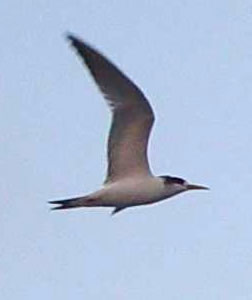 |
|
| Fig 8 | Vid 2 |
There are many signs to look for, such as turtles which are generally either near structure or current edges. Active dolphins and porpoises and other marine mammals are also worth investigating. Sweet smelling oil slicks which may be the oil from baitfish being slaughtered below are also quite obvious as you can track them both with sight and smell over quite long distances.
Other signs such as floating objects, either flotsam or man-made anchored Fish Aggregating Devices (FADs) are also a great sign as they can attract a massive amount of marine life. (Vid 3)
| Vid 3 |
All the signs discussed so far have been rather obvious and should be quite easy to spot. We have partially explained what some of the signs mean and how to interpret them. Experience will show that it is the fleeting glimpses, the tiny ripples, the tip of a dorsal, a fish's bow wave, the flash of silver below the surface, a swirl, an escaping flying fish gliding on the wind, a free jumping marlin at some distance. These are some of the signs that are not obvious or easy to see, and rarely last long enough to get confirmation from other crew members. These are, however, the signs that make the difference.
Just as signs can be positive, they are not necessarily indications of large predators in the area, often small feeding fish behave as if they are in no peril, flicking on the surface or chasing food of their own. At these times it is important to find other signs such as those mentioned earlier to see if it is worth waiting in the area for the ‘bite time' or continue your search.
| Vid 4 |
| Vid 5 |
Without question the ability to ‘spot' is the single most important factor in the success of a gamefishing team, get it right and then the dream of 'fish in the lure spread' has much more chance of coming true.





